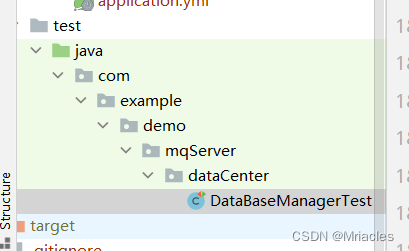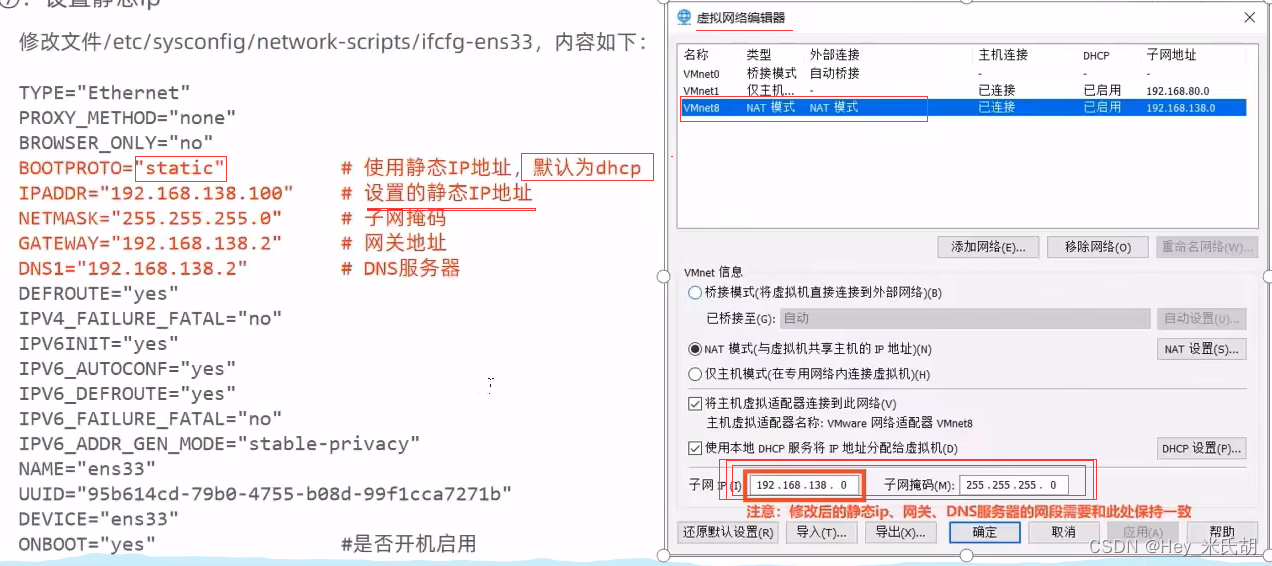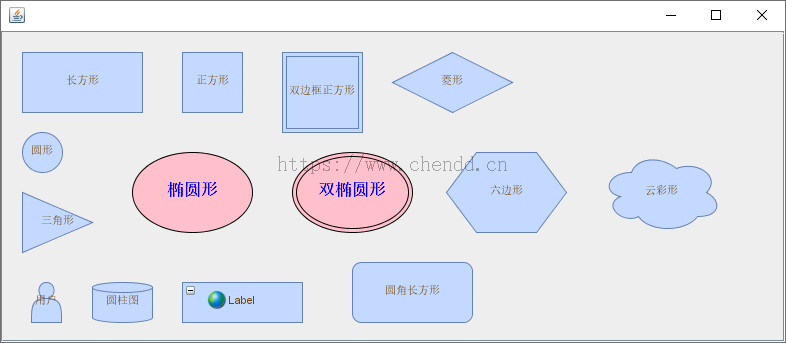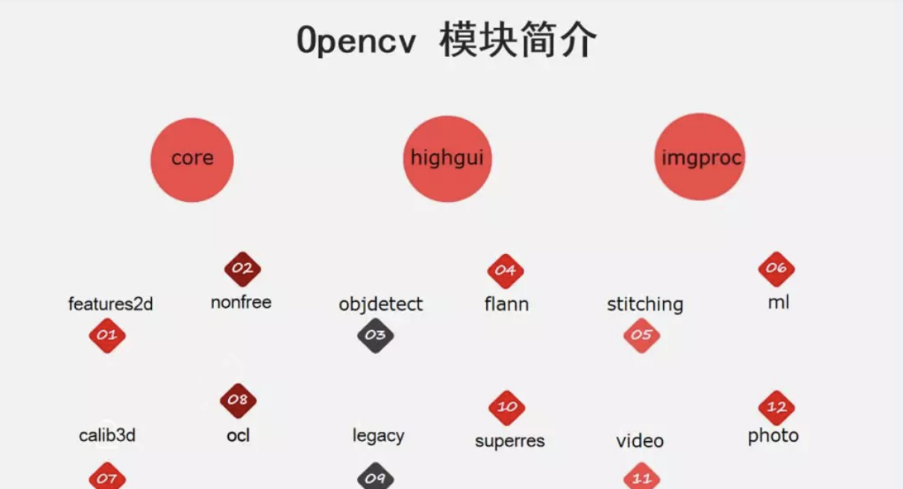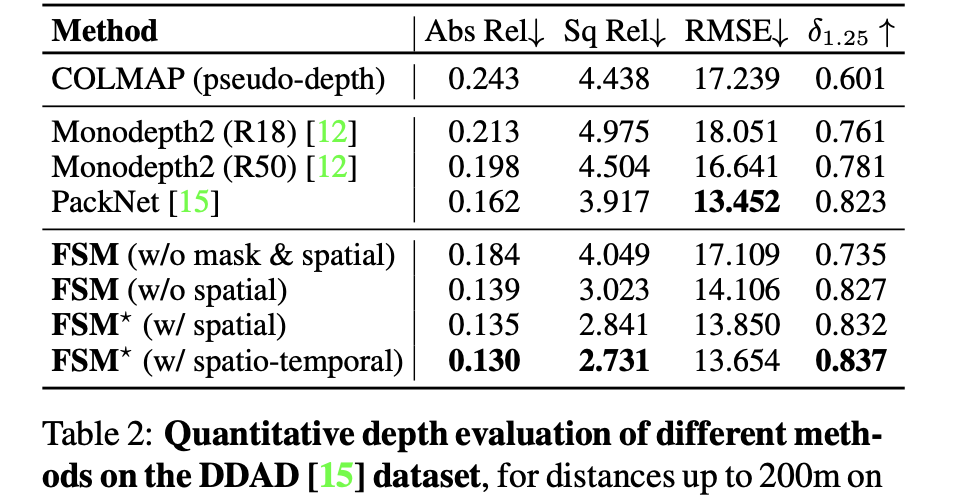(一)大家可以看我写的这三篇,了解一下:
基于linux下的高并发服务器开发(第四章)- 多线程实现并发服务器_呵呵哒( ̄▽ ̄)"的博客-CSDN博客![]() https://blog.csdn.net/weixin_41987016/article/details/132026417?spm=1001.2014.3001.5501
https://blog.csdn.net/weixin_41987016/article/details/132026417?spm=1001.2014.3001.5501
手写线程池 - C语言版 - 笔记总结_呵呵哒( ̄▽ ̄)"的博客-CSDN博客![]() https://blog.csdn.net/weixin_41987016/article/details/131926834?spm=1001.2014.3001.5501
https://blog.csdn.net/weixin_41987016/article/details/131926834?spm=1001.2014.3001.5501
基于多线程实现服务器并发_呵呵哒( ̄▽ ̄)"的博客-CSDN博客![]() https://blog.csdn.net/weixin_41987016/article/details/132047357?spm=1001.2014.3001.5501
https://blog.csdn.net/weixin_41987016/article/details/132047357?spm=1001.2014.3001.5501
(二)在套接字服务器端使用线程池的思路:
两类任务需要处理:第一类任务就是和客户端建立连接,第二类任务就是和客户端建立连接之后进行数据通信,所以可以把与客户端建立连接抽象出一个函数,和客户端进行通信抽象一个函数。
那么在通信的过程中,线程有多少个是由谁来管理呢?其实是由管理者线程来维护的。综上所述,如果我们使用了线程池,不管是和客户端建立连接,还是和客户端进行通信,其实都是由工作的线程来完成的。除此之外,工作的线程和管理者线程其实他们都是子线程。如果他们都是子线程,那么程序中的这个主线程干什么事情呢?其实在程序里的主线程,它只需要把监听的套接字创建出来,然后进行绑定,设置监听,接着把这个线程池对象创建出来。然后把这个接受客户端连接的任务放到线程池里边,主线程的使命其实就算是完成了。这个时候我们就可以让主线程退出了。【pthread_exit(NULL);】如果单纯的让主线程退出,也不会影响子线程的执行。这个子线程就是线程池里边所有的线程,基于这些线程池里边运行的线程就可以和客户端建立连接,并且和客户端进行通信。
(三)使用多线程和使用线程池在逻辑上是有一些区别的:
如果直接编写多线程程序,需要在这个主线程里边去做一个accept操作,在这个子线程里边去做通信。但是如果使用了线程池里边的主线程,这个主线程主要负责把线程池创建出来,在线程池里边的n个子线程就负责和客户端建立连接,并且和建立连接成功的客户端进行通信。这些都是由线程池里边的这n个工作的子线程来完成的。线程池里边这个子线程的创建和销毁,都是由线程池里边的这个管理者线程来维护的。这一点是手写线程池和使用线程池思路上有一些区别的地方。
(1)主线程需要完成的任务:
1.创建监听的套接字 lfd
int lfd = socket(AF_INET,SOCK_STREAM,0);
if(lfd == -1) {
perror("socket");
exit(-1);
}2.绑定本地的IP port
// 2.绑定本地的IP port
struct sockaddr_in saddr;
saddr.sin_family = AF_INET;
saddr.sin_port = htons(9999);//主机字节序转换成网络字节序
saddr.sin_addr.s_addr = INADDR_ANY;// 0 = 0.0.0.0 对于0来说,大端和小端是没有区别的的,因此不需要转换
int ret = bind(lfd,(struct sockaddr*)&saddr,sizeof(saddr));
if(ret == -1) {
perror("bind");
exit(-1);
}3.设置监听
ret = listen(lfd,128);
if(ret == -1) {
perror("listen");
exit(-1);
}4.创建线程池
// 创建线程池
ThreadPool* pool =threadPoolCreate(3,8,100);
PoolInfo* info = (PoolInfo*)malloc(sizeof(PoolInfo));
info->pool = pool;
info->fd = lfd;
5.给线程池添加任务
threadPoolAdd(pool,acceptConn,info);
给线程池添加任务 (让线程池里边的线程去检测有没有新的客户端连接)因此把这个任务需要的信息放到了一块堆内存里面 :PoolInfo* info = (PoolInfo*)malloc(sizeof(PoolInfo));这个堆内存什么时候被释放呢?当这个acceptConn函数执行完毕之后,它就会把info这块内存释放掉了。主线程完成添加任务操作之后,我们就让主线程退出了。
6.主线程退出
pthread_exit(NULL);到此为止,主线程的使命已经结束,我们可以让主线程退出,剩下的所有任务都是由子线程来做的。(这个子线程就是线程池里边的线程)通过pthread_exit(NULL);调用,它只会让当前的线程退出,并不会影响其他线程的运行。也就是说主线程退出了,它并不会影响线程池里边所有的线程的运行。
咱们写的这个线程池里边并没有对线程进行销毁操作,因为我们线程池里边的这些任务函数他们执行的是一个死循环,也就意味着你不认为的去终止这些线程池里边的线程执行的任务,是不能执行完毕的,是停不了的。因此在这里就不做销毁了。在正常的项目里的任务肯定是由终止的时刻的,当任务终止了之后,就需要把相关的资源全部释放掉。那么这种关于子线程的任务函数也就执行完毕了。
(2)子线程需要完成的任务:
先准备相关结构体
// 信息结构体
typedef struct SockInfo {
struct sockaddr_in addr;
int fd;
}SockInfo;
typedef struct PoolInfo{
ThreadPool* pool;
int fd;
}PoolInfo;1.与客户端建立连接
void acceptConn(void* arg) {
PoolInfo* poolInfo = (PoolInfo*)arg;
// 4.阻塞并等待客户端的连接
int addrlen = sizeof(struct sockaddr_in);
while (1)
{
SockInfo* pinfo;
pinfo = (SockInfo*)malloc(sizeof(SockInfo));
pinfo->fd = accept(poolInfo->fd,(struct sockaddr*)&pinfo->addr,&addrlen);
if(pinfo->fd == -1) {
perror("accept");
break;
}
// 添加通信的任务
threadPoolAdd(poolInfo->pool,working,pinfo);
}
// 把用于监听的文件描述符给关掉
close(poolInfo->fd);
}2.和客户端进行通信
void working(void* arg) {
struct SockInfo* pinfo = (struct SockInfo*)arg;
// 连接建立成功,打印客户端的IP和端口信息
char ip[32];
printf("客户端的IP: %s,端口: %d\n",
inet_ntop(AF_INET,&pinfo->addr.sin_addr.s_addr,ip,sizeof(ip)),
ntohs(pinfo->addr.sin_port));
// 5.通信
while(1) {
// 接收数据
char buff[1024];
int len = recv(pinfo->fd,buff,sizeof(buff),0);
if(len > 0) {
printf("client say: %s\n",buff);
send(pinfo->fd,buff,len,0);
}else if(len == 0) {
printf("客户端已经断开了连接...\n");
break;
}else{
perror("recv");
break;
}
}
// 关掉文件描述符
close(pinfo->fd);
// 当任务执行完成之后,会在线程池里边销毁pinfo指向的内存
}完整代码:
server.c
#include <stdio.h>
#include <stdlib.h>
#include <unistd.h>
#include <string.h>
#include <arpa/inet.h>
#include <pthread.h>
#include "threadpool.h"
// 信息结构体
typedef struct SockInfo {
struct sockaddr_in addr;
int fd;
}SockInfo;
typedef struct PoolInfo{
ThreadPool* pool;
int fd;
}PoolInfo;
void working(void* arg);
void acceptConn(void* arg);
int main() {
// 1.创建监听的套接字 lfd
int lfd = socket(AF_INET,SOCK_STREAM,0);
if(lfd == -1) {
perror("socket");
exit(-1);
}
// 2.绑定本地的IP port
struct sockaddr_in saddr;
saddr.sin_family = AF_INET;
saddr.sin_port = htons(9999);//主机字节序转换成网络字节序
saddr.sin_addr.s_addr = INADDR_ANY;// 0 = 0.0.0.0 对于0来说,大端和小端是没有区别的的,因此不需要转换
int ret = bind(lfd,(struct sockaddr*)&saddr,sizeof(saddr));
if(ret == -1) {
perror("bind");
exit(-1);
}
// 3.设置监听
ret = listen(lfd,128);
if(ret == -1) {
perror("listen");
exit(-1);
}
// 创建线程池
ThreadPool* pool =threadPoolCreate(3,8,100);
PoolInfo* info = (PoolInfo*)malloc(sizeof(PoolInfo));
info->pool = pool;
info->fd = lfd;
threadPoolAdd(pool,acceptConn,info);
pthread_exit(NULL);
return 0;
}
void acceptConn(void* arg) {
PoolInfo* poolInfo = (PoolInfo*)arg;
// 4.阻塞并等待客户端的连接
int addrlen = sizeof(struct sockaddr_in);
while (1)
{
SockInfo* pinfo;
pinfo = (SockInfo*)malloc(sizeof(SockInfo));
pinfo->fd = accept(poolInfo->fd,(struct sockaddr*)&pinfo->addr,&addrlen);
if(pinfo->fd == -1) {
perror("accept");
break;
}
// 添加通信的任务
threadPoolAdd(poolInfo->pool,working,pinfo);
}
// 把用于监听的文件描述符给关掉
close(poolInfo->fd);
}
void working(void* arg) {
struct SockInfo* pinfo = (struct SockInfo*)arg;
// 连接建立成功,打印客户端的IP和端口信息
char ip[32];
printf("客户端的IP: %s,端口: %d\n",
inet_ntop(AF_INET,&pinfo->addr.sin_addr.s_addr,ip,sizeof(ip)),
ntohs(pinfo->addr.sin_port));
// 5.通信
while(1) {
// 接收数据
char buff[1024];
int len = recv(pinfo->fd,buff,sizeof(buff),0);
if(len > 0) {
printf("client say: %s\n",buff);
send(pinfo->fd,buff,len,0);
}else if(len == 0) {
printf("客户端已经断开了连接...\n");
break;
}else{
perror("recv");
break;
}
}
// 关掉文件描述符
close(pinfo->fd);
// 当任务执行完成之后,会在线程池里边销毁pinfo指向的内存
}client.c
#include <stdio.h>
#include <stdlib.h>
#include <unistd.h>
#include <string.h>
#include <arpa/inet.h>
int main() {
// 1.创建套接字
int fd = socket(AF_INET,SOCK_STREAM,0);
if(fd == -1) {
perror("socket");
return -1;
}
// 2.连接服务器IP port
struct sockaddr_in saddr;
saddr.sin_family = AF_INET;
saddr.sin_port = htons(9999);
inet_pton(AF_INET,"192.168.88.129",&saddr.sin_addr.s_addr);
int ret = connect(fd,(struct sockaddr*)&saddr,sizeof(saddr));
if(ret == -1) {
perror("connect");
return -1;
}
int number = 0;
// 3.通信
while(1) {
// 发送数据
char buff[1024];
sprintf(buff,"你好,呵呵哒,%d...\n",number++);
send(fd,buff,strlen(buff) + 1,0);
//接收数据
memset(buff,0,sizeof(buff));
int len = recv(fd,buff,sizeof(buff),0);
if(len > 0) {
printf("server say: %s\n",buff);
}else if(len == 0) {
printf("服务器已经断开了连接...\n");
break;
}else{
perror("recv");
}
sleep(1);
}
// 关闭文件描述符
close(fd);
return 0;
}
threadpool.h
#ifndef _THREADPOOL_H
#define _THREADPOOL_H
typedef struct ThreadPool ThreadPool;
// 创建线程池并初始化
ThreadPool *threadPoolCreate(int min, int max, int queueCapacity);
// 销毁线程池
int threadPoolDestroy(ThreadPool* pool);
// 给线程池添加任务
void threadPoolAdd(ThreadPool* pool, void(*func)(void*), void* arg);
// 获取线程池中工作的线程的个数
int threadPoolBusyNum(ThreadPool* pool);
// 获取线程池中活着的线程的个数
int threadPoolAliveNum(ThreadPool* pool);
//
// 工作的线程(消费者线程)任务函数
void* worker(void* arg);
// 管理者线程任务函数
void* manager(void* arg);
// 单个线程退出
void threadExit(ThreadPool* pool);
#endif // _THREADPOOL_H
threadpool.c
#include <pthread.h>
#include <stdlib.h>
#include <stdio.h>
#include <string.h>
#include <unistd.h>
#include "threadpool.h"
const int NUMBER = 2;
// 任务结构体
typedef struct Task
{
void (*function)(void* arg);
void* arg;
}Task;
// 线程池结构体
struct ThreadPool
{
// 任务队列
Task* taskQ;
int queueCapacity; // 容量
int queueSize; // 当前任务个数
int queueFront; // 队头 -> 取数据
int queueRear; // 队尾 -> 放数据
pthread_t managerID; // 管理者线程ID
pthread_t *threadIDs; // 工作的线程ID
int minNum; // 最小线程数量
int maxNum; // 最大线程数量
int busyNum; // 忙的线程的个数
int liveNum; // 存活的线程的个数
int exitNum; // 要销毁的线程个数
pthread_mutex_t mutexPool; // 锁整个的线程池
pthread_mutex_t mutexBusy; // 锁busyNum变量
pthread_cond_t notFull; // 任务队列是不是满了
pthread_cond_t notEmpty; // 任务队列是不是空了
int shutdown; // 是不是要销毁线程池, 销毁为1, 不销毁为0
};
// 创建线程池并初始化
ThreadPool* threadPoolCreate(int min, int max, int queueCapacity)
{
ThreadPool* pool = (ThreadPool*)malloc(sizeof(ThreadPool));
do
{
if (pool == NULL)
{
printf("malloc threadpool fail...\n");
break;
}
pool->threadIDs = (pthread_t*)malloc(sizeof(pthread_t) * max);
if (pool->threadIDs == NULL)
{
printf("malloc threadIDs fail...\n");
break;
}
memset(pool->threadIDs, 0, sizeof(pthread_t) * max);
pool->minNum = min;
pool->maxNum = max;
pool->busyNum = 0;
pool->liveNum = min; // 和最小个数相等
pool->exitNum = 0;
if (pthread_mutex_init(&pool->mutexPool, NULL) != 0 ||
pthread_mutex_init(&pool->mutexBusy, NULL) != 0 ||
pthread_cond_init(&pool->notEmpty, NULL) != 0 ||
pthread_cond_init(&pool->notFull, NULL) != 0)
{
printf("mutex or condition init fail...\n");
break;
}
// 任务队列
pool->taskQ = (Task*)malloc(sizeof(Task) * queueCapacity);
pool->queueCapacity = queueCapacity;
pool->queueSize = 0;
pool->queueFront = 0;
pool->queueRear = 0;
pool->shutdown = 0;
// 创建线程
pthread_create(&pool->managerID, NULL, manager, pool);
for (int i = 0; i < min; ++i)
{
pthread_create(&pool->threadIDs[i], NULL, worker, pool);
}
return pool;
} while (0);
// 释放资源
if (pool && pool->threadIDs) free(pool->threadIDs);
if (pool && pool->taskQ) free(pool->taskQ);
if (pool) free(pool);
return NULL;
}
// 销毁线程池
int threadPoolDestroy(ThreadPool* pool)
{
if (pool == NULL)
{
return -1;
}
// 关闭线程池
pool->shutdown = 1;
// 阻塞回收管理者线程
pthread_join(pool->managerID, NULL);
// 唤醒阻塞的消费者线程
for (int i = 0; i < pool->liveNum; ++i)
{
pthread_cond_signal(&pool->notEmpty);
}
// 释放堆内存
if (pool->taskQ)
{
free(pool->taskQ);
}
if (pool->threadIDs)
{
free(pool->threadIDs);
}
pthread_mutex_destroy(&pool->mutexPool);
pthread_mutex_destroy(&pool->mutexBusy);
pthread_cond_destroy(&pool->notEmpty);
pthread_cond_destroy(&pool->notFull);
free(pool);
pool = NULL;
return 0;
}
// 给线程池添加任务
void threadPoolAdd(ThreadPool* pool, void(*func)(void*), void* arg)
{
pthread_mutex_lock(&pool->mutexPool);
while (pool->queueSize == pool->queueCapacity && !pool->shutdown)
{
// 阻塞生产者线程
pthread_cond_wait(&pool->notFull, &pool->mutexPool);
}
if (pool->shutdown)
{
pthread_mutex_unlock(&pool->mutexPool);
return;
}
// 添加任务
pool->taskQ[pool->queueRear].function = func;
pool->taskQ[pool->queueRear].arg = arg;
pool->queueRear = (pool->queueRear + 1) % pool->queueCapacity;
pool->queueSize++;
pthread_cond_signal(&pool->notEmpty);
pthread_mutex_unlock(&pool->mutexPool);
}
// 获取线程池中工作的线程的个数
int threadPoolBusyNum(ThreadPool* pool)
{
pthread_mutex_lock(&pool->mutexBusy);
int busyNum = pool->busyNum;
pthread_mutex_unlock(&pool->mutexBusy);
return busyNum;
}
// 获取线程池中活着的线程的个数
int threadPoolAliveNum(ThreadPool* pool)
{
pthread_mutex_lock(&pool->mutexPool);
int aliveNum = pool->liveNum;
pthread_mutex_unlock(&pool->mutexPool);
return aliveNum;
}
// 工作的线程(消费者线程)任务函数
void* worker(void* arg)
{
ThreadPool* pool = (ThreadPool*)arg;
while (1)
{
pthread_mutex_lock(&pool->mutexPool);
// 当前任务队列是否为空
while (pool->queueSize == 0 && !pool->shutdown)
{
// 阻塞工作线程
pthread_cond_wait(&pool->notEmpty, &pool->mutexPool);
// 判断是不是要销毁线程
if (pool->exitNum > 0)
{
pool->exitNum--;
if (pool->liveNum > pool->minNum)
{
pool->liveNum--;
pthread_mutex_unlock(&pool->mutexPool);
threadExit(pool);
}
}
}
// 判断线程池是否被关闭了
if (pool->shutdown)
{
pthread_mutex_unlock(&pool->mutexPool);
threadExit(pool);
}
// 从任务队列中取出一个任务
Task task;
task.function = pool->taskQ[pool->queueFront].function;
task.arg = pool->taskQ[pool->queueFront].arg;
// 移动头结点
pool->queueFront = (pool->queueFront + 1) % pool->queueCapacity;
pool->queueSize--;
// 解锁
pthread_cond_signal(&pool->notFull);
pthread_mutex_unlock(&pool->mutexPool);
printf("thread %ld start working...\n", pthread_self());
pthread_mutex_lock(&pool->mutexBusy);
pool->busyNum++;
pthread_mutex_unlock(&pool->mutexBusy);
task.function(task.arg);
free(task.arg);
task.arg = NULL;
printf("thread %ld end working...\n", pthread_self());
pthread_mutex_lock(&pool->mutexBusy);
pool->busyNum--;
pthread_mutex_unlock(&pool->mutexBusy);
}
return NULL;
}
// 管理者线程任务函数
void* manager(void* arg)
{
ThreadPool* pool = (ThreadPool*)arg;
while (!pool->shutdown)
{
// 每隔3s检测一次
sleep(3);
// 取出线程池中任务的数量和当前线程的数量
pthread_mutex_lock(&pool->mutexPool);
int queueSize = pool->queueSize;
int liveNum = pool->liveNum;
pthread_mutex_unlock(&pool->mutexPool);
// 取出忙的线程的数量
pthread_mutex_lock(&pool->mutexBusy);
int busyNum = pool->busyNum;
pthread_mutex_unlock(&pool->mutexBusy);
// 添加线程
// 任务的个数>存活的线程个数-忙的线程 && 存活的线程数<最大线程数
if (queueSize > liveNum-busyNum && liveNum < pool->maxNum)
{
pthread_mutex_lock(&pool->mutexPool);
int counter = 0;
for (int i = 0; i < pool->maxNum && counter < NUMBER
&& pool->liveNum < pool->maxNum; ++i)
{
if (pool->threadIDs[i] == 0)
{
pthread_create(&pool->threadIDs[i], NULL, worker, pool);
counter++;
pool->liveNum++;
}
}
pthread_mutex_unlock(&pool->mutexPool);
}
// 销毁线程
// 忙的线程*2 < 存活的线程数 && 存活的线程>最小线程数
if (busyNum * 2 < liveNum && liveNum > pool->minNum)
{
pthread_mutex_lock(&pool->mutexPool);
pool->exitNum = NUMBER;
pthread_mutex_unlock(&pool->mutexPool);
// 让工作的线程自杀
for (int i = 0; i < NUMBER; ++i)
{
pthread_cond_signal(&pool->notEmpty);
}
}
}
return NULL;
}
// 单个线程退出
void threadExit(ThreadPool* pool)
{
pthread_t tid = pthread_self();
for (int i = 0; i < pool->maxNum; ++i)
{
if (pool->threadIDs[i] == tid)
{
pool->threadIDs[i] = 0;
printf("threadExit() called, %ld exiting...\n", tid);
break;
}
}
pthread_exit(NULL);
}运行效果:
gcc server.c threadpool.c -lpthread -o server
./serverheheda@heheda:~/Linux/DB_teacher$ ./server
thread 140278235014912 start working...
thread 140278218229504 start working...
客户端的IP: 192.168.88.129,端口: 50356
client say: 你好,呵呵哒,0...
client say: 你好,呵呵哒,1...
client say: 你好,呵呵哒,2...
thread 140278226622208 start working...
客户端的IP: 192.168.88.129,端口: 50362
client say: 你好,呵呵哒,0...
client say: 你好,呵呵哒,3...
client say: 你好,呵呵哒,1...
client say: 你好,呵呵哒,4...
client say: 你好,呵呵哒,2...
client say: 你好,呵呵哒,5...
client say: 你好,呵呵哒,3...
thread 140278207641344 start working...
客户端的IP: 192.168.88.129,端口: 50378
client say: 你好,呵呵哒,0...
client say: 你好,呵呵哒,6...
client say: 你好,呵呵哒,4...
client say: 你好,呵呵哒,1...
client say: 你好,呵呵哒,7...
client say: 你好,呵呵哒,5...
client say: 你好,呵呵哒,2...
client say: 你好,呵呵哒,8...
thread 140278128178944 start working...
客户端的IP: 192.168.88.129,端口: 58904
client say: 你好,呵呵哒,0...
client say: 你好,呵呵哒,6...
client say: 你好,呵呵哒,3...
client say: 你好,呵呵哒,9...
client say: 你好,呵呵哒,1...
client say: 你好,呵呵哒,7...
client say: 你好,呵呵哒,4...
client say: 你好,呵呵哒,10...
client say: 你好,呵呵哒,2...
client say: 你好,呵呵哒,8...
client say: 你好,呵呵哒,5...
client say: 你好,呵呵哒,11...
client say: 你好,呵呵哒,3...
client say: 你好,呵呵哒,9...
client say: 你好,呵呵哒,6...
client say: 你好,呵呵哒,12...
client say: 你好,呵呵哒,4...
client say: 你好,呵呵哒,10...
client say: 你好,呵呵哒,7...
client say: 你好,呵呵哒,13...
client say: 你好,呵呵哒,5...
client say: 你好,呵呵哒,11...
client say: 你好,呵呵哒,8...
client say: 你好,呵呵哒,14...
client say: 你好,呵呵哒,6...
client say: 你好,呵呵哒,12...
client say: 你好,呵呵哒,9...
client say: 你好,呵呵哒,15...
client say: 你好,呵呵哒,7...
client say: 你好,呵呵哒,13...
client say: 你好,呵呵哒,10...
client say: 你好,呵呵哒,16...
client say: 你好,呵呵哒,8...
client say: 你好,呵呵哒,14...
client say: 你好,呵呵哒,11...
client say: 你好,呵呵哒,17...
client say: 你好,呵呵哒,9...
client say: 你好,呵呵哒,15...
client say: 你好,呵呵哒,12...
client say: 你好,呵呵哒,18...
client say: 你好,呵呵哒,10...
client say: 你好,呵呵哒,16...
client say: 你好,呵呵哒,13...
client say: 你好,呵呵哒,19...
client say: 你好,呵呵哒,11...
client say: 你好,呵呵哒,17...
client say: 你好,呵呵哒,14...
client say: 你好,呵呵哒,20...
client say: 你好,呵呵哒,12...
client say: 你好,呵呵哒,18...
client say: 你好,呵呵哒,15...
客户端已经断开了连接...
thread 140278218229504 end working...
client say: 你好,呵呵哒,13...
client say: 你好,呵呵哒,19...
client say: 你好,呵呵哒,16...
client say: 你好,呵呵哒,14...
客户端已经断开了连接...
thread 140278226622208 end working...
client say: 你好,呵呵哒,17...
client say: 你好,呵呵哒,15...
client say: 你好,呵呵哒,18...
客户端已经断开了连接...
thread 140278207641344 end working...
client say: 你好,呵呵哒,16...
client say: 你好,呵呵哒,17...
客户端已经断开了连接...
thread 140278128178944 end working...
threadExit() called, 140278218229504 exiting...
threadExit() called, 140278226622208 exiting...


